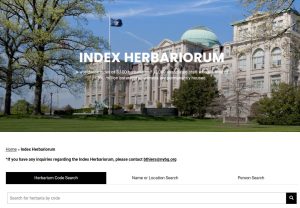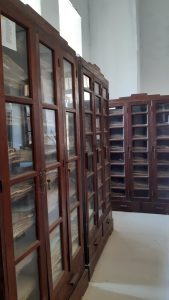 Herbaria serve as a repository of botanical specimens as they store dried plant specimens for future study. Each herbarium possesses a collection of properly identified and classified specimens. They act as a taxonomic aid that provides information for the identification of plant species. They provide the comparative material that is essential for studies in taxonomy, systematics, ecology, anatomy, morphology, conservation biology, biodiversity, ethnobotany, and paleobiology, as well as being used for teaching and by the public. Recently, widespread specimen digitization has greatly enhanced the use of herbarium data in scientific research. Nowadays, research publications using herbarium data have increased exponentially.
Herbaria serve as a repository of botanical specimens as they store dried plant specimens for future study. Each herbarium possesses a collection of properly identified and classified specimens. They act as a taxonomic aid that provides information for the identification of plant species. They provide the comparative material that is essential for studies in taxonomy, systematics, ecology, anatomy, morphology, conservation biology, biodiversity, ethnobotany, and paleobiology, as well as being used for teaching and by the public. Recently, widespread specimen digitization has greatly enhanced the use of herbarium data in scientific research. Nowadays, research publications using herbarium data have increased exponentially.
There are around 3,000 herbaria in over 165 countries, with an estimated 390 million specimens. A world catalogue of public herbaria, Index Herbariorum (IH), is provided on the web at http://sweetgum.nybg.org/science/ih/. Each herbarium in Index Herbariorum is assigned an official acronym (herbarium code) that is used as a standard for referring to the institution and its specimens.
Sree Narayana College Herbarium (acronym SNCH), one of the pioneer herbaria of South India, is attached to the Post Graduate & Research Department of Botany, Sree Narayana College Kollam, which was established in 1949. Completely digitalized, SNCH is a member of the Society of Herbarium Curators (SHC) and has been acknowledged by the International Herbarium Index. SNCH is the 5th largest herbarium in Kerala State, India.
Presently, the herbarium houses over 5000 specimens belonging to 134 families, 988 genera, and 2183 species, arranged by the Bentham & Hooker classification system. A complete set of herbarium specimens from two district floras (Kollam & Pathanamthitta) in Kerala State, India, were properly documented and managed at SNCH. The herbarium collection includes specimens from three South Indian states (Kerala, Karnataka, & Tamil Nadu), and the collection’s geographic focus is the Southern Western Ghats. The collections are actively growing; approximately 100 plant specimens are added each year.
Voucher specimen submission at SNCH
SNCH is associated with the Botanical Information Service (BIS), an extension activity of the Botany Department that provides facilities for specimen submission, identification, and authentication to researchers and the public.
Download the SNCH AUTHENTICATION REQUEST FORM & Guidelines for specimen submission from BIS (Click here)
Digitalization of SNCH
Each herbarium provides a permanent record of botanical diversity and is particularly used to confirm the identity of a plant or determine that it is new to science. In the era of ‘Big Data’, modernization of herbaria is increasingly important as the rate of habitat destruction increases and Climate Change accelerates the changes in species distribution, which emerges from scientific studies like Biodiversity informatics, global change biology, and DNA barcoding. In this scenario, information on the botanical collection is made more easily accessible than ever before through digitalization, database development, and a Botanical Management System.
Virtual Herbarium is the gateway to digitalized botanical specimens publicly available through the internet to increase awareness of herbaria. To achieve this goal, the digitalization of the Sree Narayana College Herbarium (SNCH) began in 2022. Until now, about 3000 specimens were archived and made available for database development. The development of a comprehensive botanical management system on SNCH is in progress.
SNCH was officially recognized and indexed in Index Herbariorum, a guide to the world’s herbaria.
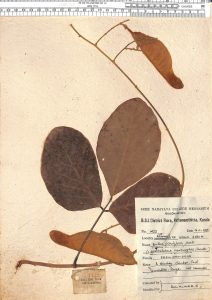
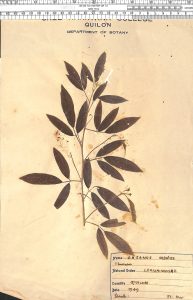
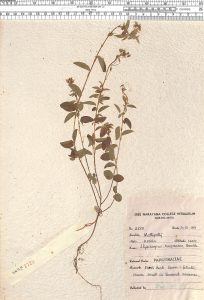
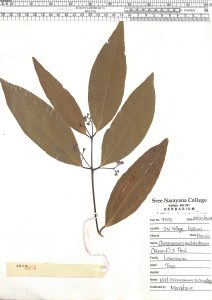
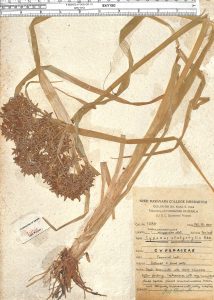
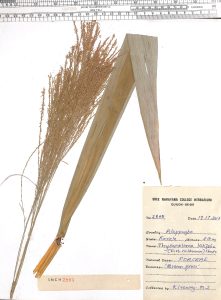
Botanical Collections of SNCH
- A complete set of specimens of Flora of Pathanamthitta District
- Floristic studies of Kollam District
- Sedges & Grasses of Kerala
- Rare plant specimens of Udagamandalam, Tamil Nadu
- General collections from flowering plants of Kerala
- Flora of Sree Narayana College, Kollam
- Collections from Asramam Biodiversity Heritage Site, Kollam
- Plant pathology specimens from Agricultural College, Coimbatore
- Voucher specimens from internal as well as external botanical studies are added each year from 2016 onward.
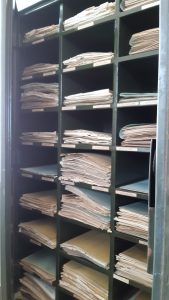
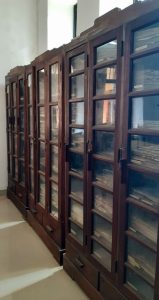

Approximate holdings of SNCH
About 5000 + specimens are kept in 9 herbarium cabinets, which hold:
- 2200 species of Angiosperms
- 80 species of Pteridophytes
- 34 species of Algae
- 30 species of Fungi
- 130 library books, journals, reprints, maps, and illustrations
History of SNCH
 Professor N. Ravi, former Head of the Botany Department (1991-1994), initiated the herbarium in the 1970s. He is a well-known environmental activist in Kerala and served as an Emeritus Scientist at Jawaharlal Nehru Tropical Botanical Garden & Research Institute, Palode during the 1995-2000 period. His serious efforts were instrumental in recognising the Asramam Biodiversity Heritage Site (ABHS), Kollam, the first in Kerala State.
Professor N. Ravi, former Head of the Botany Department (1991-1994), initiated the herbarium in the 1970s. He is a well-known environmental activist in Kerala and served as an Emeritus Scientist at Jawaharlal Nehru Tropical Botanical Garden & Research Institute, Palode during the 1995-2000 period. His serious efforts were instrumental in recognising the Asramam Biodiversity Heritage Site (ABHS), Kollam, the first in Kerala State.
The first significant expansion of the SNCH herbarium came in 1985 when studies on flowering plant diversity in Pathanamthitta District, a research project funded by the Botanical Survey of India, were conducted by N. Ravi & N. Anilkumar. The Flora of Pathanamthitta collection consisted of about 3,500 specimens. Later, the Taxonomy of Cyperaceae, a UGC minor research project, studied by N. Ravi, enhanced the SNCH collection. N. Ravi conducted fieldwork, mostly in the southern part of Kerala state. He enriched his collection through gifts and exchanges with many notable botanists of that time, including D. Devarajan, K Rajappan, R Vasudevan Nair, etc. This collection consists of approximately 1200 sheets. Professor Ravi contributed many specimens from Kollam & Alappuzha districts and several specimens from Udagamadalam (Tamil Nadu). During that period, many plant pathology specimens collected by R. Soundararaju were obtained through an exchange programme with the Agricultural College, Coimbatore. N. Ravi and his co-workers discovered 32 new plant species new to science and published two books and 55 research articles.
Main collectors of SNCH
- N. Ravi, N. Anilkumar, R. Vasudevan Nair, D. Devarajan, P. Natanaraj, K. Rajapan, D. Seethamoney, R. Sounadraraju, K. Arjunan, M.S. Kiranraj
Support Staff of SNCH
- Kiranraj MS, PhD (Curator of Herbarium):- Angiosperms, Poaceae
- Rajendraprasad (Herbarium Keeper- On Temporary)
- Nisha AP, PhD (Head of the Department of Botany):- Algae
- Preetha PS, PhD:- Bryophytes, Angiosperms
- Latha Sadanandan PhD:- Pteridophytes
- Ratheesh N, PhD:- Fungi, Gymnosperms
- Chithra Vijayan PhD:- Pteridophytes
- Vilash V, PhD:- Bryophytes, Angiosperms

Affiliations: Department of Botany, BGSNCK, Hortus Keralae, GRASSNEST, BIS
Contact: [email protected]
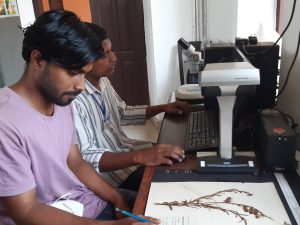
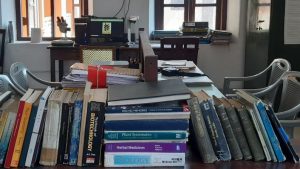
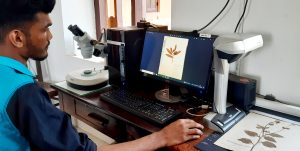
Useful links to important Herbaria
- TROPICOS : https://www.tropicos.org/home
- Kew Herbarium: https://www.kew.org/science/collections-and-resources/collections/herbarium
- Botanical Survey of India Herbarium: https://bsi.gov.in/page/en/herbarium-images
- Kerala Forest Research Institute Herbarium: https://www.kfri.res.in/herbarium.asp
Importance of Herbarium
Herbarium specimens are useful as references for plant identification and the determination of plant locations, abundance, habitat, and flowering and fruiting periods. They are used for studies in which the differences between plant species are evaluated and described (eg. revisions, monographs) or in which the species growing in a region are reported (eg. floras). Herbarium specimens are also useful in many other disciplines. Some examples are:
- Horticulture – identify native and cultivated plants; find plant locations; document cultivars
- Agronomy/Forestry – locate wild plants that have potential as new crops; document plants used as crops and forage; locate and identify relatives of cultivated species for use in breeding programs; identify and document the spread of weeds
- Anthropology/Archeology – identify seed, wood and other plant remains from archaeological sites; plants used by people (ethnobotany)
- Ecology – locate and document plant communities or individual species; identify and document invasive species
- Entomology – locate food plants and habitats for insects; document pollination ecology
- Environmental Regulation – identify plants in an area to define the habitat and designate an environmentally and legally appropriate use for the site
- Forensics – identify plant fragments that might yield evidence in legal cases; in some cases, plant fragments may be used to determine if a person was in a certain place
- Pharmaceutical Research – locate wild plants as a possible source of medicines
- Medical Care – identify plants in cases of Poison & ingestion
- Veterinary Science – identify forage and poisonous plants
- Zoology – identify animal food plants; locate animal habitats
How to make a home herbarium? watch the video at https://youtu.be/2kEbCaTe8XM (Source: NYBG)
Written & Photographed by: Dr Kiranraj, MS (last content revision: 10 Feb 2023)

